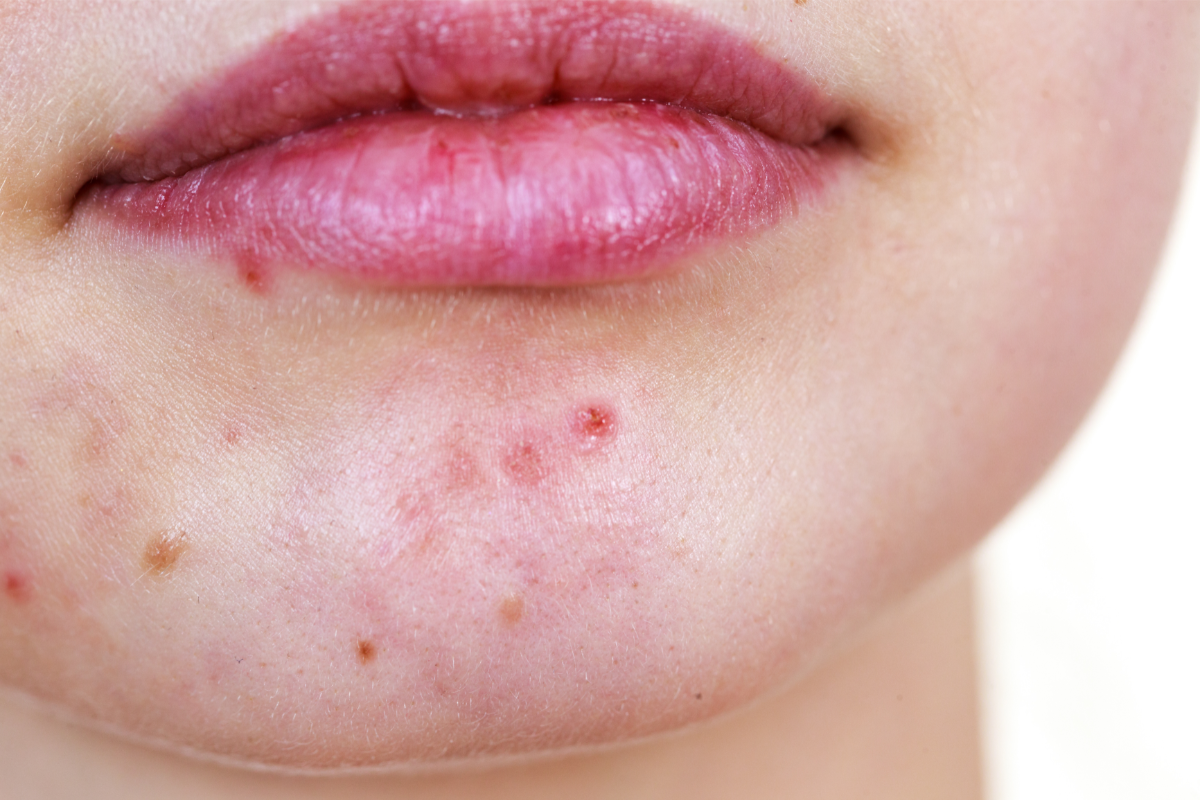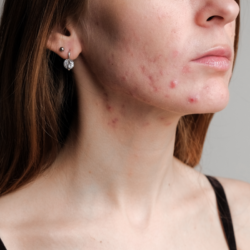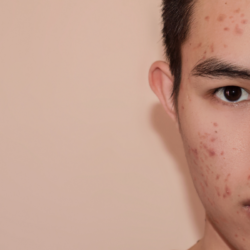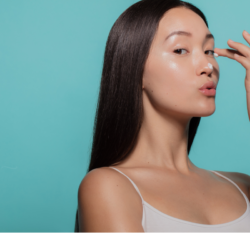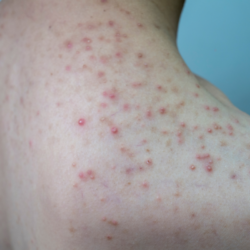In order to delay the progression of COVID-19 we have all opted to wear masks. They are now a must in some public places as well as on public transport or in your workplace. In fact the mask acts as a protective barrier against the coronavirus.
Many people have developed a form of acne called Mascne, as a result of wearing the mask for a long time.
However, wearing the mask is not only likely to cause pimples, it can also be responsible for various skin problems, such as eczema, folliculitis, perioral dermatitis and rosacea.
The origin of mascne
When we speak or simply breathe, hot air is trapped under the mask. Beyond the fact that this is quite uncomfortable for some, it maintains a warm and humid environment: ideal conditions for bacteria, yeast or Demodex to multiply on the surface of the skin.
This change in the balance of the skin’s microbiota, combined with the friction caused by the mask, can be responsible for outbreaks of acne, rosacea, etc. .
The term Mascne encompasses various skin problems such as :
- Acne. Acne develops when the pores are blocked by excess sebum, dead skin cells and impurities. It appears as pimples, whiteheads or blackheads.
- Seborrheic dermatitis.
- Contact dermatitis. This occurs when you develop an allergy to a component of your mask. In fact, this is the most common reaction to mask use, especially when the skin barrier is compromised.
- Hives.
- Atopic eczema.
- Folliculitis. This is a disorder of the hair follicles that causes bumps similar to acne pimples.
- Rosacea. If you have rosacea, wearing a mask is likely to cause pimples to flare up and make your flushing and redness worse.
How to get rid of acne under the mask?
We recommend that you continue to wear a mask, to protect yourself and those around you. Wearing a mask can greatly disturb the skin’s balance, both because of the humid environment and because of the friction it causes. Mascne can be avoided, provided you take care of your skin barrier. As we saw earlier, a healthy skin is able to act as a protective barrier, preventing bacteria from penetrating it. That’s why it’s important to choose gentle, soothing, repairing and moisturising products.
Let’s take a look at some of the strategies you can use to soothe your skin if you suffer from mascne:
Best practices to say goodbye to mascne
- Clean your skin morning and evening and after wearing a mask or sweating, with a gentle, non-aggressive cleanser that respects the skin barrier. Stelatopia cleansing gel from Mustela is ideal for effectively cleaning and soothing skin that has been weakened by wearing a mask. The whole family can use it, both on the body and on the face, which makes it very economical.
- You can use products based on centella asiatica, d’azelaic acid or niacinamide, to limit the appearance of pimples and calm the inflammation.
- Moisturise your skin every night with products that soothe and repair the skin barrier. The Cicaplast range from Laroche Posay the skin’s natural barrier is specially designed to help the skin rebuild itself, while calming redness and irritation.
- We recommend that you change your mask regularly to limit the chances of irritation, especially after sweating. It is best to clean or change it after each use. Use a detergent or soap without perfume or essential oils and make sure you dry your mask properly.
Sources:
https://www.ncbi.nlm.nih.gov/pmc/articles/PMC7528820/
https://pubmed.ncbi.nlm.nih.gov/33576511/
https://www.ncbi.nlm.nih.gov/pmc/articles/PMC8836723/

